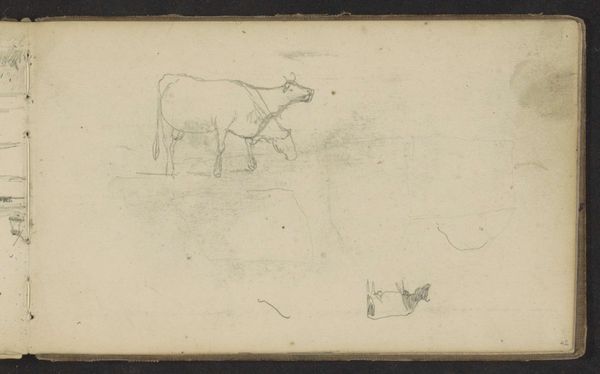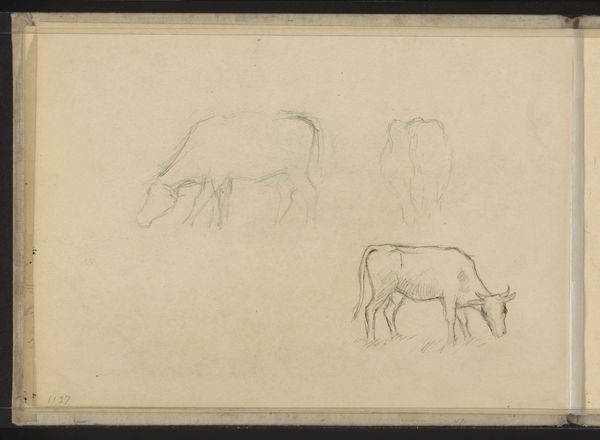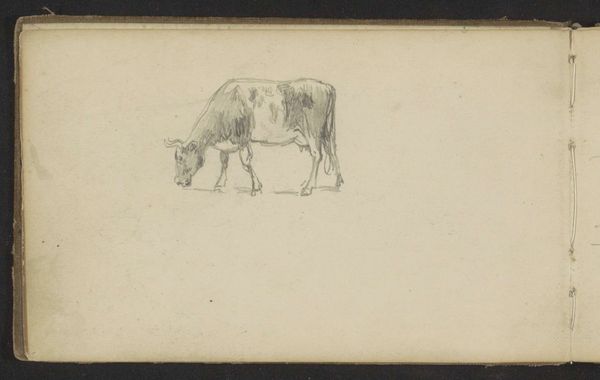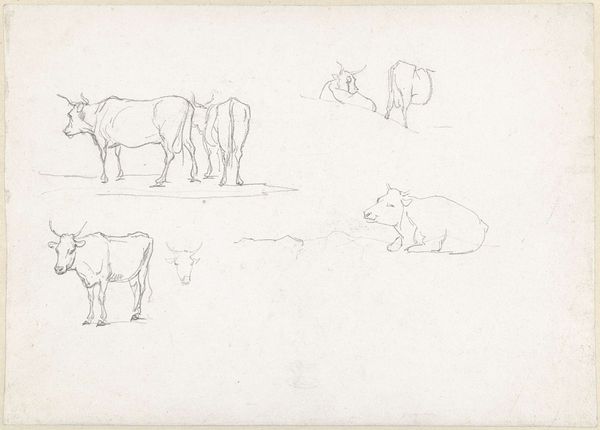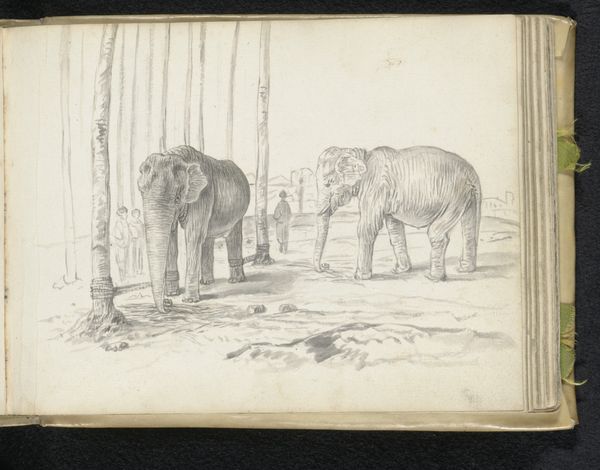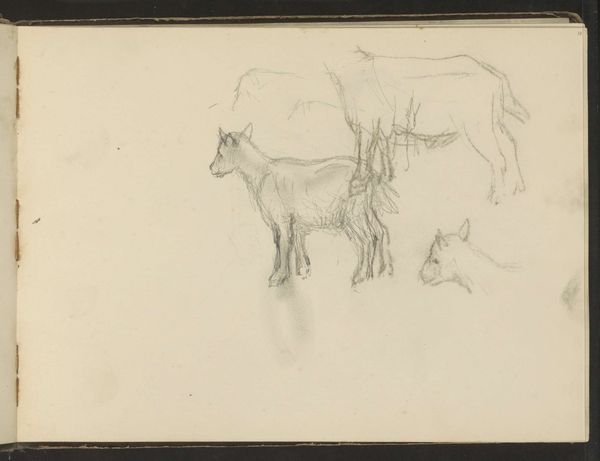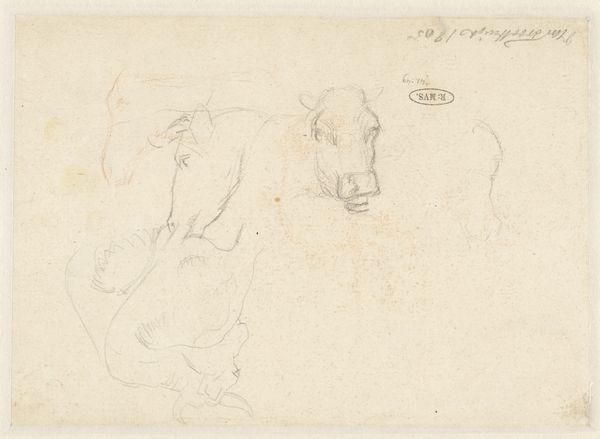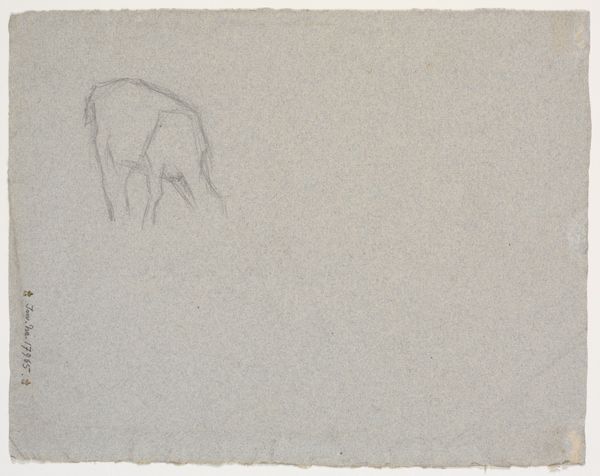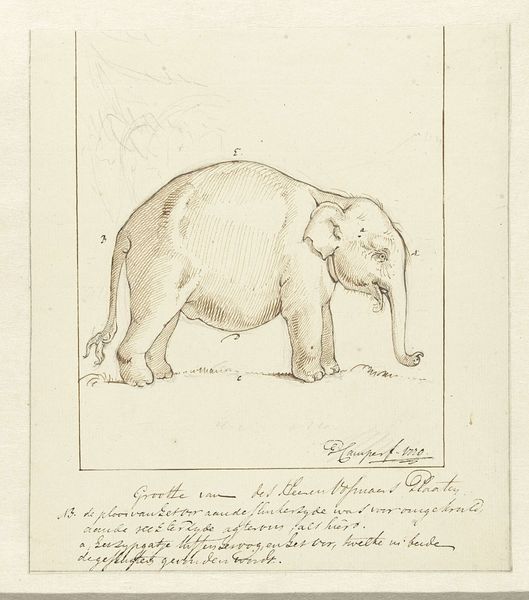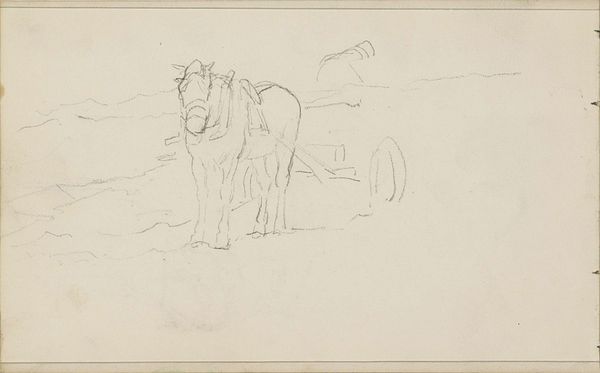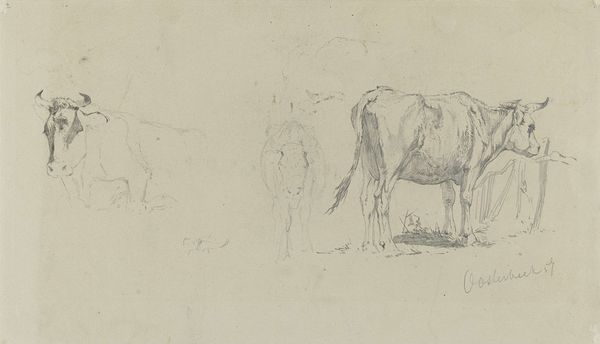
drawing, pencil
#
drawing
#
landscape
#
form
#
pencil
#
line
#
sketchbook drawing
#
realism
Copyright: Rijks Museum: Open Domain
Editor: We're looking at "Koe," a pencil drawing made between 1834 and 1903 by Johan Hendrik Weissenbruch, currently residing in the Rijksmuseum. It feels like a quick sketch, almost ephemeral in its lightness. What strikes you about its formal qualities? Curator: Immediately, the line stands out. Note the artist’s deliberate use of contour, defining the subject's form through the purity of line, rather than relying on shading or tonal variation. It’s a study in essential form, almost architectural in its precision. Consider how the negative space interacts with the drawn form, creating a sense of balance. Do you observe how the placement contributes to the overall composition? Editor: Yes, I see it now. The sparseness emphasizes the form, but is there significance to the fact that it appears in a sketchbook? Curator: Absolutely. It's tempting to see this simply as preparatory. Yet, that sketchbook format alters our reception. It becomes an intimate encounter with the artist's process. The flatness emphasizes the graphic nature. How do you think Weissenbruch manipulated line quality to express depth? Editor: I notice the variation in line weight – heavier in areas suggesting shadow, lighter where the form recedes. So, even with such economy, there’s an implicit modeling. It's amazing how much information is conveyed with so few lines. Curator: Precisely. It showcases a mastery of reduction, stripping the subject to its most fundamental components. Reflect upon how our engagement alters knowing it’s part of an art book: does it invite a unique interaction that differs from viewing the same isolated work on a gallery wall? Editor: Definitely. Thinking about it as a sketchbook drawing adds a layer of meaning, like seeing a fleeting thought made visible. Thank you, this was really enlightening. Curator: Indeed, considering the work in terms of its raw formal expression really reveals its power.
Comments
No comments
Be the first to comment and join the conversation on the ultimate creative platform.
